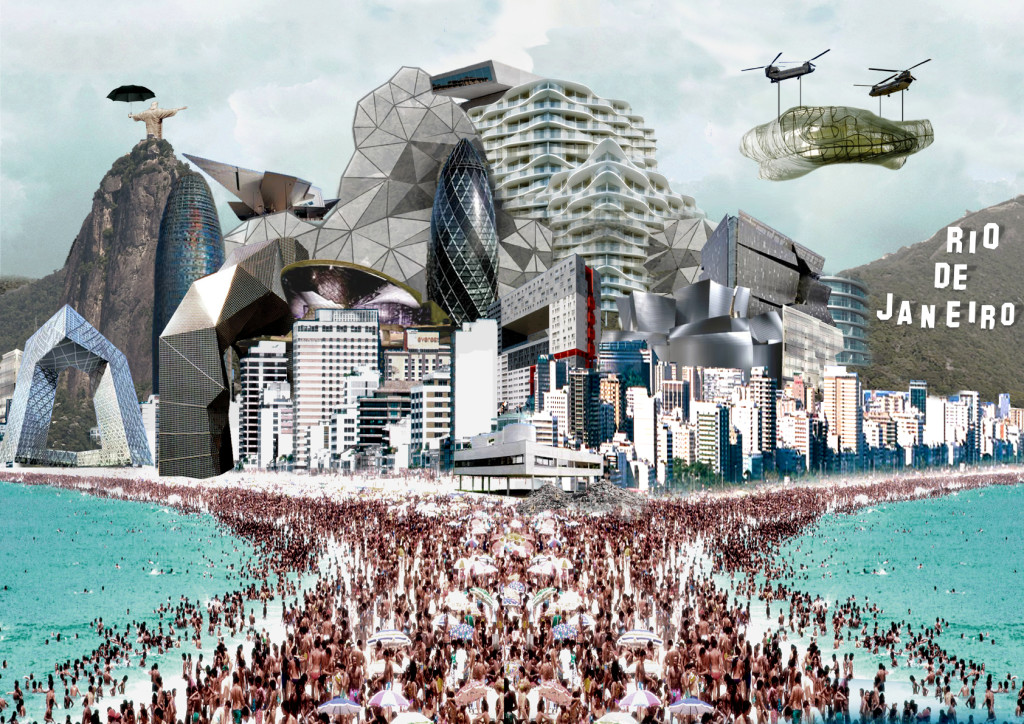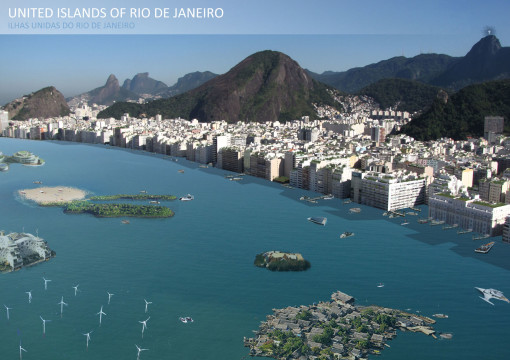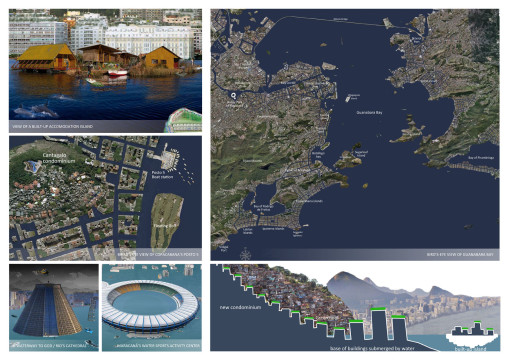Info:
Title: UNITED ISLANDS OF RIO DE JANEIRO - Code: df628Contest: Rio de Janeiro / 2013
By: Antoine Soulier-Thomazeau - Raphaël Burgeat - Laure Beringuer - Laure Gourbaud
Views: 4292 Likes: 2
Votes:
Alejandro Zaera-Polo 11 Jeffrey Inaba 7 Jeroen Koolhaas 2 Hernan Diaz Alonso 1 Cristiano Toraldo di Francia 7 Pedro Rivera 55.5
UNITED ISLANDS OF RIO DE JANEIRO
United Islands of Rio de Janeiro Rio is under water, worst climate change scenario, this dualistic metropole shows up a perfect resilience capacity to face it. What would happen if the water level were to rise ten meters? No more beaches, no more bridges between the islands of the Guanabara Bay. The fight with the rain water is over. The Rio-Niteroi Bridge is now just a road for electric cars and bikes. This is the perfect occasion to figure out Rio as a bay metropole including the two sides of the bay. The north zone becomes a real city and Rio is not longer a little south zone centered beach city. The hills (morros) become islands and the tops are really valued as they have become the only space protected from waters rising and luxurius condominiums emerge. With this scenario, it is possible to take an electric boat in Copacabana to go to the north part of the Guanabara bay to have a grilled fish. All the means of transport are green and electric, water transportation and bikes, cars are no longer used into the city. The two main forms of housing of Rio, favelas houses (casa de favela) and secured buildings (condominio) present two different ways of living and a very good combination to fit to this new situation. The secured buildings can be adapted like this: the first 4 or 5 floors of car park immersed, become very useful to park now personal watercrafts and desalinization machines for the inhabitants, the playground space is just above the water and can still continue to play its role with more gardening, and the housing floors can remain as they are. The roof top is now used for gardening and sunbathing (as there is no more beaches on the coast, so artificial beach islands). As for the favelas houses, their container style architecture can be easily reconstructed on new moving islands along the bay. These islands are made of recycled elements and can be productive islands: food, desalting water… They float above the water thanks to a system of plastic cans. They can be fixed to the closed buildings that can also be harbors. They can be directly linked to the business buildings and this partly resolves the problems of transport in the city. Now the choice to live near from the work place is real. In front of this climate change, Rio adopts all the latest urban policies and architectural green technics. In particular, the concrete has been treated to resist to the water and the structure that already existed has been refurbished. A very good waste/water combined system has been implemented: machine islands along the bay and particular machines for the secured buildings and the favelas islands keeping the bay totally clean. This scenario illustrates how today’s two dualistic forms of housing can be totally complementary in this new situation. With the morros islands, the new favelas islands and the condominios islands new urban and complementary system, we can really speak about The United Islands of Rio de Janeiro.








